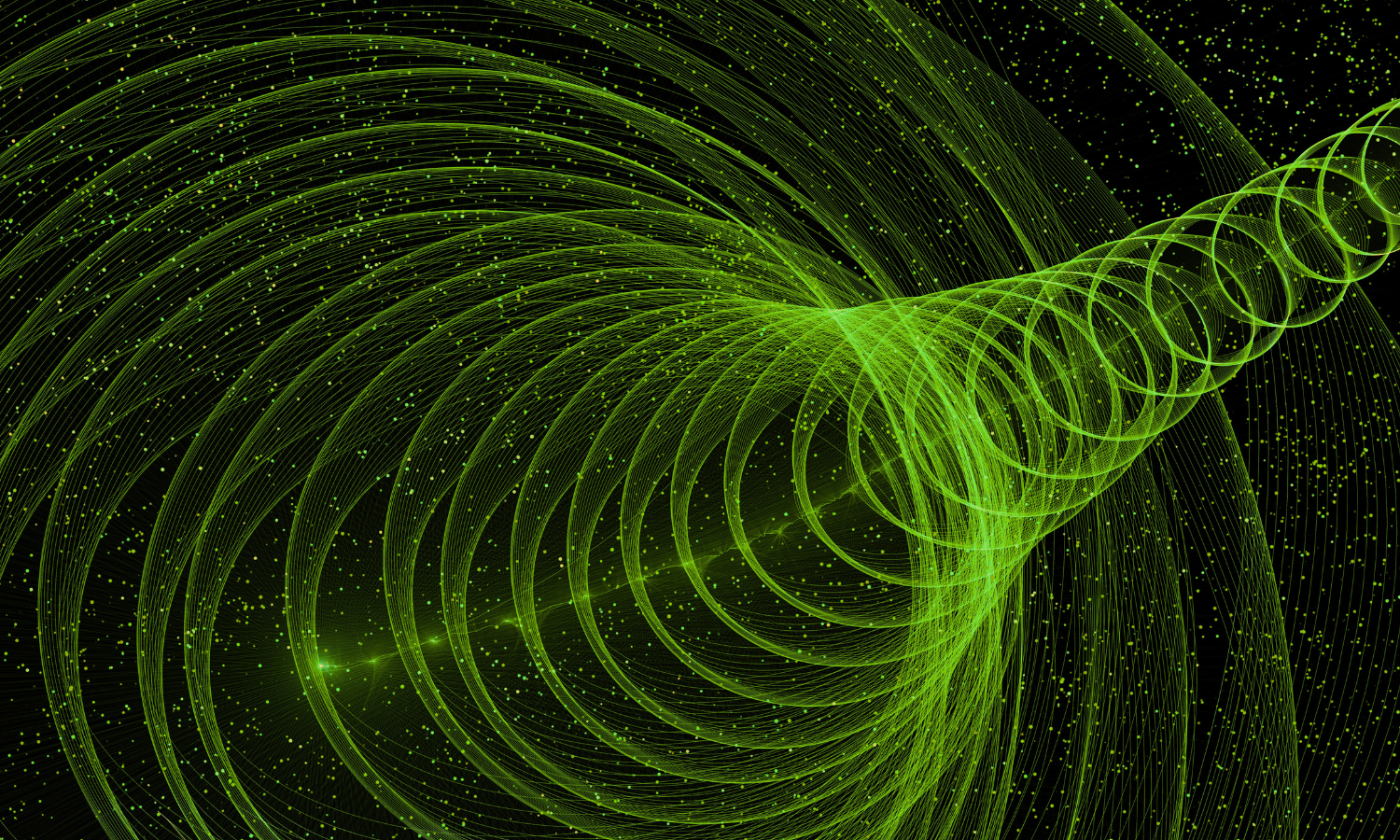Decoding Financial Market Oscillations: A Fourier and Wavelet Transform Analysis for Algorithmic Trading
Author
Richard Goodman
Date Published

Abstract
This paper investigates the application of Fourier and Wavelet Transforms to one year of minute-level EUR/USD forex data to identify predictable patterns for algorithmic trading strategy development. The core hypothesis posits that these mathematical techniques can extract predictable signals from otherwise unpredictable financial time series. The methodology involves initial data charting, Fourier transformation of the entire dataset, and subsequent segmentation for localized analysis. A Bloch Sphere representation is explored for visualizing quantum function mapping in future applications. The study then focuses on "flattening" the reconstructed signal to isolate oscillatory components, aiming to eliminate noise and reveal investment opportunities. While initial analyses suggest a potential 27-day cycle, further autocorrelation plots indicate a complex, long-memory structure rather than a distinct, dominant cycle, highlighting the need for advanced ML techniques for prediction. This work aims to determine the signal's suitability for sophisticated AI/ML applications within an investment firm's trading strategies.
View Related Publications
GitHub Repo : https://github.com/Abraxas1010/fourier_wavelet
Introduction/Background
Financial markets are inherently complex and dynamic systems, often characterized by apparent randomness. However, beneath the surface of seemingly chaotic price movements, underlying patterns and periodicities can exist. Identifying and leveraging these patterns is a primary objective for investment firms seeking to develop robust algorithmic trading strategies. Traditional technical analysis often relies on visual inspection of charts and basic indicators, which may not capture the full spectrum of a signal's frequency content.
Apoth3osis was contracted to conduct research that explores the utility of advanced signal processing techniques—specifically Fourier Transform (FT) and Wavelet Transform—to decompose and analyze minute-level EUR/USD exchange rate data. The central hypothesis driving this investigation is that these mathematical transforms can reveal predictable signals within financial time series that are otherwise considered unpredictable. The goal is to determine if such inherent predictability exists to a sufficient degree to warrant further investment in developing sophisticated AI/ML predictive models. The project's ultimate business application is the development of algorithmic trading strategies for an investment firm.
Methodology
The study utilized one year of minute-level EUR/USD forex data. This high-granularity dataset provides a rich source of information for capturing short-term market dynamics. Prior to analysis, the data was resampled to a consistent 1-minute interval, a crucial step for the assumptions underlying Fourier Transform analysis.
The methodological approach involved several key stages:
Initial Data Charting: The raw EUR/USD price series was visualized to observe overall trends, volatility, and general market behavior.
Global Fourier Transform (FT): The FT was applied to the entire one-year dataset to decompose the signal into its constituent frequencies, amplitudes, and phases. This provides a holistic view of the dominant cycles present across the entire observation period.
Bloch Sphere Representation (Conceptual): As a conceptual exploration for future quantum computing applications, the Fourier Transform components were visualized on a Bloch Sphere. While not a direct analytical step for classical prediction, this visualization serves to intuitively represent the complex nature of frequency, amplitude, and phase, exploring how these might be mapped to quantum states.
Segmented Fourier Transform Analysis: To capture time-dependent patterns, the one-year dataset was divided into 20 equal segments. A separate Fourier Transform was then performed on each segment. This allowed for the identification of localized dominant frequencies and their evolution over time.
Signal Flattening and Oscillation Isolation: The most significant (top 20) frequency components from the global Fourier Transform were used to reconstruct an "optimal" signal, representing the primary trends of the EUR/USD rate. This reconstructed signal was then subtracted from the original price data, resulting in a "flattened" signal. This process effectively isolates the short-term oscillations or "noise" around the dominant trends, making them amenable for further analysis. The objective here was to eliminate noise and reveal specific investment opportunities.
Autocorrelation Analysis of Oscillations: The isolated oscillations were subjected to autocorrelation analysis, which measures how correlated a time series is with its past values. This helps in identifying repeating patterns or cycles within the oscillations.
Aggressive Price Movement Detection and Transform Comparison: Aggressive price movements were identified as instances where daily returns exceeded two standard deviations of their 20-day rolling standard deviation. Wavelet Transforms were applied to segments around these aggressive moves, and their characteristics were compared against Fourier Transform results. This was intended to determine if there was enough signal in the data to apply advanced ML techniques.
Results
Initial charting of the EUR/USD data confirmed typical financial time series characteristics, including trends and varying volatility. The global Fourier Transform provided a spectral breakdown of the entire dataset.
The signal flattening process successfully isolated oscillations around the reconstructed trend. Statistical analysis of these oscillations revealed a mean extremely close to zero (e.g., -8.367e-17), indicating a balanced distribution of positive and negative deviations from the reconstructed trend. The standard deviation of these oscillations was approximately 0.024, representing their typical magnitude.
A preliminary analysis based on peak detection in the oscillation series suggested an average distance between peaks of approximately 26.68 days. This initially hinted at a potential monthly cycle, possibly linked to recurring economic events. However, subsequent autocorrelation analysis of these oscillations provided a more nuanced view. While the autocorrelation function showed a gradual decay, indicating long-lasting correlations in the data (up to about 50 days), it did not exhibit pronounced, statistically significant peaks at multiples of 27 days or any other fixed periodicity. This suggests that the 27-day cycle, if present, is not a dominant or consistently predictable feature of the oscillations.
The comparison of Wavelet and Fourier Transforms for aggressive price movements generated correlation values that varied across segments. This indicates that the nature of these movements and their underlying frequency content can differ depending on the specific time period.
Discussion & Conclusion
The findings indicate that while Fourier and Wavelet Transforms can indeed decompose complex financial signals, the EUR/USD oscillations, once primary trends are removed, do not exhibit simple, fixed-period cyclical predictability as initially hypothesized for a 27-day cycle. The autocorrelation analysis strongly suggests a 'long-memory' process, where past values influence future values over extended periods, but without clear, repeating rhythms that can be easily identified through simple periodicity. This is a critical insight for the development of algorithmic trading strategies.
The near-zero mean of the isolated oscillations is a positive finding, confirming that the flattening process effectively centered the data around its underlying trend. This indicates that short-term deviations from the reconstructed trend are balanced, implying a tendency for the exchange rate to revert to this 'equilibrium' over time. This concept of mean-reversion, though not strictly periodic, can be a valuable basis for trading strategies.
The variability in correlation between Wavelet and Fourier Transforms during aggressive movements underscores the complex, non-stationary nature of financial data. While both transforms offer unique perspectives (Fourier in frequency domain, Wavelet in time-frequency domain), their optimal application may depend on the specific market context.
In conclusion, this research confirms that despite the absence of simplistic cyclical patterns, there is indeed sufficient actionable signal within the EUR/USD minute-level data to warrant further development of predictive models using advanced machine learning techniques. Given the observed long-memory effects and the complex oscillatory structure, sophisticated AI/ML models (such as deep learning architectures or advanced time series models like ARMA/GARCH variants) will be necessary to capture these intricate, non-linear relationships and translate them into effective algorithmic trading strategies for Apoth3osis's investment firm.
References
[1] Internal R&D Notebook: https://github.com/Abraxas1010/fourier_wavelet
Related Projects

A comparative study of combinatorial optimization and evolutionary algorithms as foundational methodologies for predictive modeling in forex markets.

Decomposing financial time-series into a multi-domain set of latent components and reconstructing the signal using evolutionary algorithms

A dynamic analytical framework to deconstruct headline inflation, revealing critical insights obscured by aggregate data
